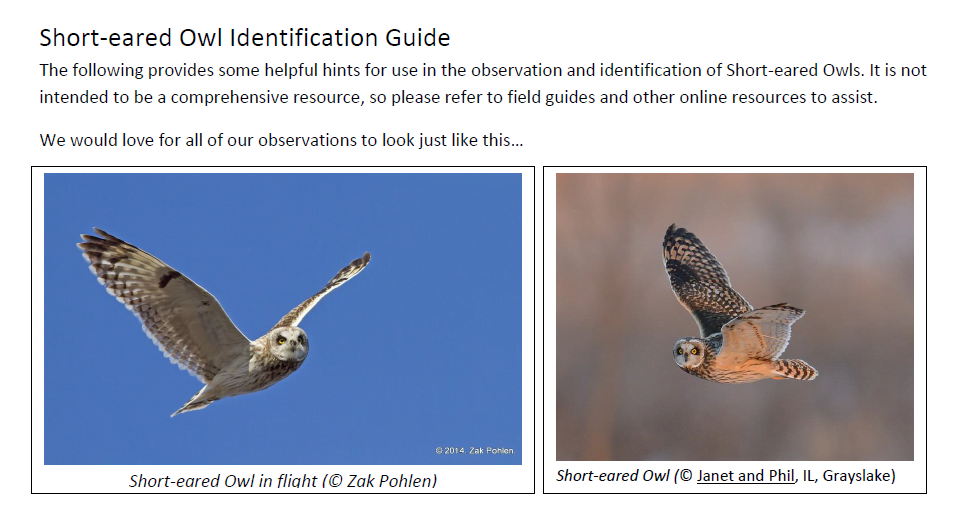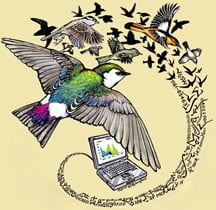Training

This Identification Guide provides some helpful hints for use in the observation and identification of Short-eared Owls. CLICK HERE TO VIEW THE PDF.
Watch the training videos listed below for detailed information on an overview of the project, the protocol, how to set up and successfully complete a survey, identification tips and how to enter your data.
- Program Objectives – Video 1: WAfLS Program Introduction
○ Brief introduction to Short-eared Owls
○ Why are we concerned about Short-eared Owls
○ Project WAfLS objectives
○ Integration of survey results with conservation
- Overall Protocol – Video 2: WAfLS Overall Protocol
○ How does the program work?
○ Terminology: visits, grids, routes, points
○ Why is it set up this way
- Choosing your route within a grid – Video 3: WAfLS Choosing your Route
○ Traffic, safety considerations
○ Landowner considerations
○ Point spacing
○ Point coordinates – datum, format, options
- Owl survey at point – Video 4: Owl Survey Protocol
○ Survey dates and survey times, why it matters
○ Core owl survey protocol – minute-by-minute
○ Searching techniques
○ Identification – positive or unsure
- Habitat Survey at point – Video 5: Habitat Survey
○ When to do habitat assessment (each visit, before survey begins)
○ Habitat classes
○ Grazing measures
- SEOW Identification – Video 6: SEOW Identification
○ Key characteristics of Short-eared Owls
○ Species most likely to be confused with Short-eared Owls (Long-eared Owl, Great Horned Owl, Northern Harrier, Barn Owl)
○ Short-eared Owl Courtship Flight (Neil Paprocki, Utah state coordinator)
○ Short-eared Owl Courtship Flight (Bryce Robinson, Idaho volunteer)
○ Separating Short-eared Owls and Long-eared Owls
- Other Birds of Interest – Video 7: Other Birds
○ Why record other birds of interest
○ Review of the species of interest, including basic identification tips
○ Other observations
○ eBird
- Data entry – Data Entry Training and Other Resources

